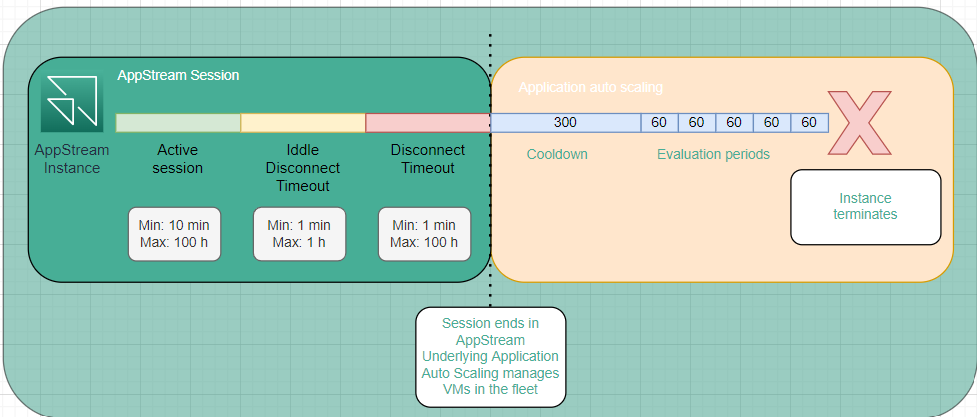- Le plus récent
- Le plus de votes
- La plupart des commentaires
Yes.
AppStream instances under Idle Disconnect and Disconnect timers are still 'Running' and instances are powered on and you will be billed for the running time. This will be a part of the Running Capacity and will be counted in Capacity utilisation.
During the cooldown periods, scaling policies do not act unless it is scheduled policy or there is a scale out policy trigger during the cool down period. Reference under 'Define cooldown period' - https://docs.aws.amazon.com/autoscaling/application/userguide/application-auto-scaling-target-tracking.html
Thank you for your answer.
We have another question regarding Idle and Disconnect timers. We're migrating an app that currently saves its state and users' work every 10 minutes. I wonder what happens in a situation where a user accidentally disconnects before 10 minutes (let's assume that 8 minutes of work has passed and the user closes the browser tab). Will our application live, so to say, and be able to write to S3? I understand that session is in a Disconnect timeout state but will our app be able to save the last work made by a user in this state? Or does the instance enter some kind of hibernate state?
Contenus pertinents
- demandé il y a un an
- demandé il y a un an
- demandé il y a un an
 AWS OFFICIELA mis à jour il y a un an
AWS OFFICIELA mis à jour il y a un an AWS OFFICIELA mis à jour il y a 3 ans
AWS OFFICIELA mis à jour il y a 3 ans AWS OFFICIELA mis à jour il y a 3 ans
AWS OFFICIELA mis à jour il y a 3 ans AWS OFFICIELA mis à jour il y a 3 ans
AWS OFFICIELA mis à jour il y a 3 ans
 What I mean is: does the Instances in Idle and Disconnect Timeouts count as a Running Capacity and are included in CapacityUtilization within CloudWatch Alarms metrics? Is the assumption correct that cooldown and evaluation period would be picked up by CloudWatch alarm after the Timeouts have expired?
What I mean is: does the Instances in Idle and Disconnect Timeouts count as a Running Capacity and are included in CapacityUtilization within CloudWatch Alarms metrics? Is the assumption correct that cooldown and evaluation period would be picked up by CloudWatch alarm after the Timeouts have expired?
Quick clarification: Cooldown only happens after Application AutoScaling triggers a scaling event. If any changes happen internal to AppStream (ex, it replaces an instance after a user session ends), AutoScaling doesn't know about that at all, so no cooldown is triggered.